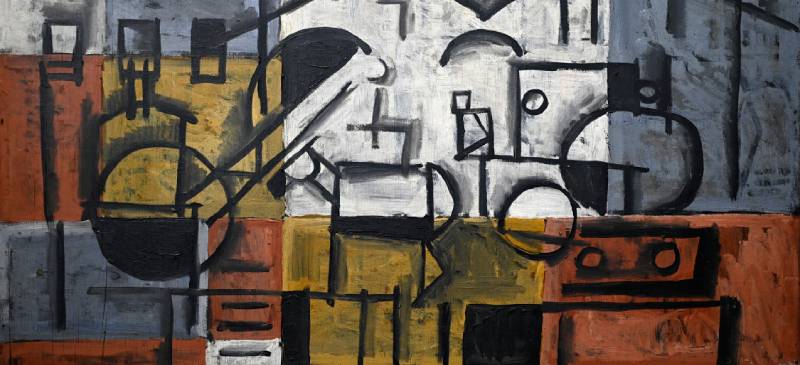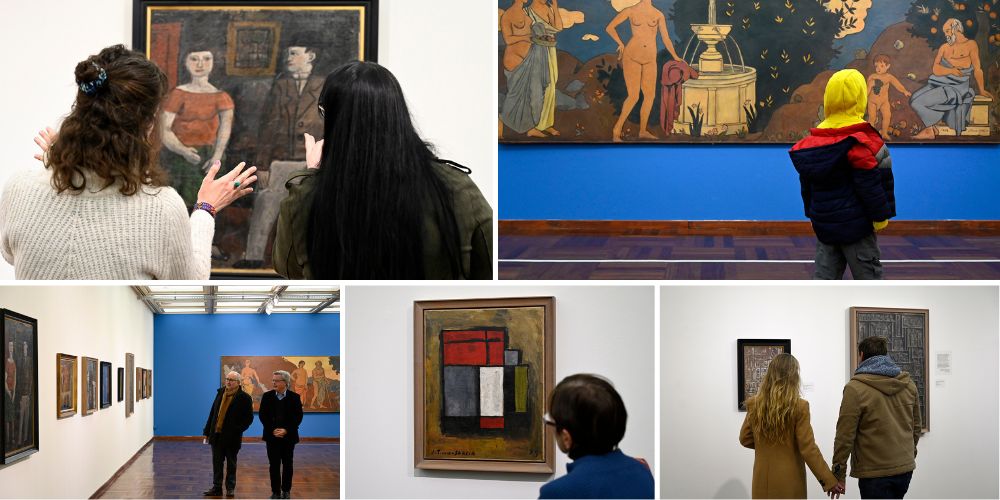- Home
- About us
- News
- Events
- EXPORT Export
-
BUY
Buy
BuyBuyFood and beverage Beef Caviar Dairy Products Fruits Healthy foods Olive oil Processed Foods Rice Sweets, honey and jams Wines ICT Software development Technology products
- INVEST Invest
- COUNTRY BRAND Country Brand
-
INFORMATION CENTER
Information center
InformationCenterInformationCenterReports Country reports Department reports Foreign trade reports Product-Destination worksheet Sectors reports Work documentsStatistical information Classification Uruguay XXI Exports Imports Innovative National Effort Macroeconomic Monitor Tools Buyers Exporters Investors
- Contact
-
Languages
Uruguay celebrates 150 years of Joaquín Torres García, one of its most emblematic artists
Two exhibitions and a documentary show the career of the creator who marked the history of Uruguayan art.
Share:

Sunday, July 28 marked the 150th anniversary of the birth of Joaquín Torres García, the Uruguayan artist, teacher and theorist who left his mark on several generations of local artists and thinkers, and whose imprint is still alive today.
The anniversary is also an excuse to re-examine the place he occupies in the collective imagination of the whole country. The celebration began at the beginning of the year with the exhibition Descubriéndose a sí mismo at the Museo de Arte Contemporáneo Atchugarry in Maldonado. Since then, the artist's life and work continue to be celebrated in different corners of the country.
In Montevideo there are two exhibitions called to be protagonists of the celebrations. One takes place at the Torres Garcia Museum under the title “Torres Garcia: Classic, Modern and Universal” and exhibits the three major periods in which his work was developed to allow an approach to the complete vision of the Torres Garcia Universe.
“Torres García affirmed that the artist must be like a bridge that weaves his work between an idea of cosmic equilibrium and the daily reality in which we all inhabit. He sought, time and again, to materialize and give body, through strokes and tones, forms and structures, to that intangible thing he called the harmony of the universe, and that search took on different aspects, theoretical frameworks, techniques, materials and artistic procedures that can be conceptualized in three great formal modes; Classical, Modern and Universal,” said the museum's director and great-grandson of the artist, Alejandro Diaz.
The exhibition includes representative works from each period, along with documents and archival material, including numerous unpublished drawings and manuscripts. It also includes private works and pieces rarely exhibited in public. A highlight is the recreation of the emblematic mural Pax in Lucem, destroyed in the fire in Rio de Janeiro in 1978 and brought back to life for this occasion.
The other exhibition is installed at the National Museum of Visual Arts and is called The Universe as a Challenge and, according to the curatorial text, “one of its purposes is to allow us to go through a legacy with a particularly uncommon density of thought, since it includes not only his intense plastic work and its interpretation, but also teaching in the fullest sense of the term”.
The exhibition is displayed in three spaces. In the museum's garden the Cosmic Monument can be appreciated, in room 2 there is a selection of works by artists of the Torres García Workshop such as Julio Alpuy, Elsa Andrada, Gonzalo Fonseca, José Gurvich or Augusto Torres and Horacio Torres, and room 5 presents all the works signed by Torres García that the National Museum of Visual Arts has at its disposal.

Pax in Lucem
In 1974, when Torres Garcia's 100th birthday was being celebrated, a retrospective of his work made up of 73 pieces was exhibited in Montevideo, Buenos Aires and Paris, to arrive four years later at the Museum of Modern Art in Rio de Janeiro, where a ferocious fire completely devoured the building on July 8, 1978.
The discovery 35 years later of three large fragments of the mural Pax In Lucem -one of the painter's iconic works lost in the fire- triggered in his great-grandson Alejandro a journey to the origin of the work, which revealed the fantastic adventure of the artist's life and his tireless search for a Universal Art.
As Cinemateca Uruguaya's review points out, the film is the first cinematographic approach to his work. Its director Mazza De Luca has said that “it is an invitation to get to know Torres García's thought, as important as his work and as valid in these times of existential crisis. It is a film that gives new meaning to loss”.
Relatives of the painter participate in the film, such as Alejandro Díaz, director of the Torres García Museum in Montevideo, and Jimena Perera, president of the Torres García Foundation, who insist on the need to continue disseminating the work of the master of Universal Constructivism.
Torres García's legacy is not only celebrated in exhibitions and documentaries, but is also reflected in the visual identity of the Uruguay country brand. The brand's graphic system includes typography, illustrations and a compositional style that are inspired by Uruguay's artistic heritage. In particular, the iconography used by Marca País is deeply influenced by Torres García's constructivist techniques and its typography was created based on his writings and work. This inspiration is a testament to Torres García's lasting impact on Uruguay's visual culture, helping to project a national image that connects the country's artistic past with its modern, global projection.
